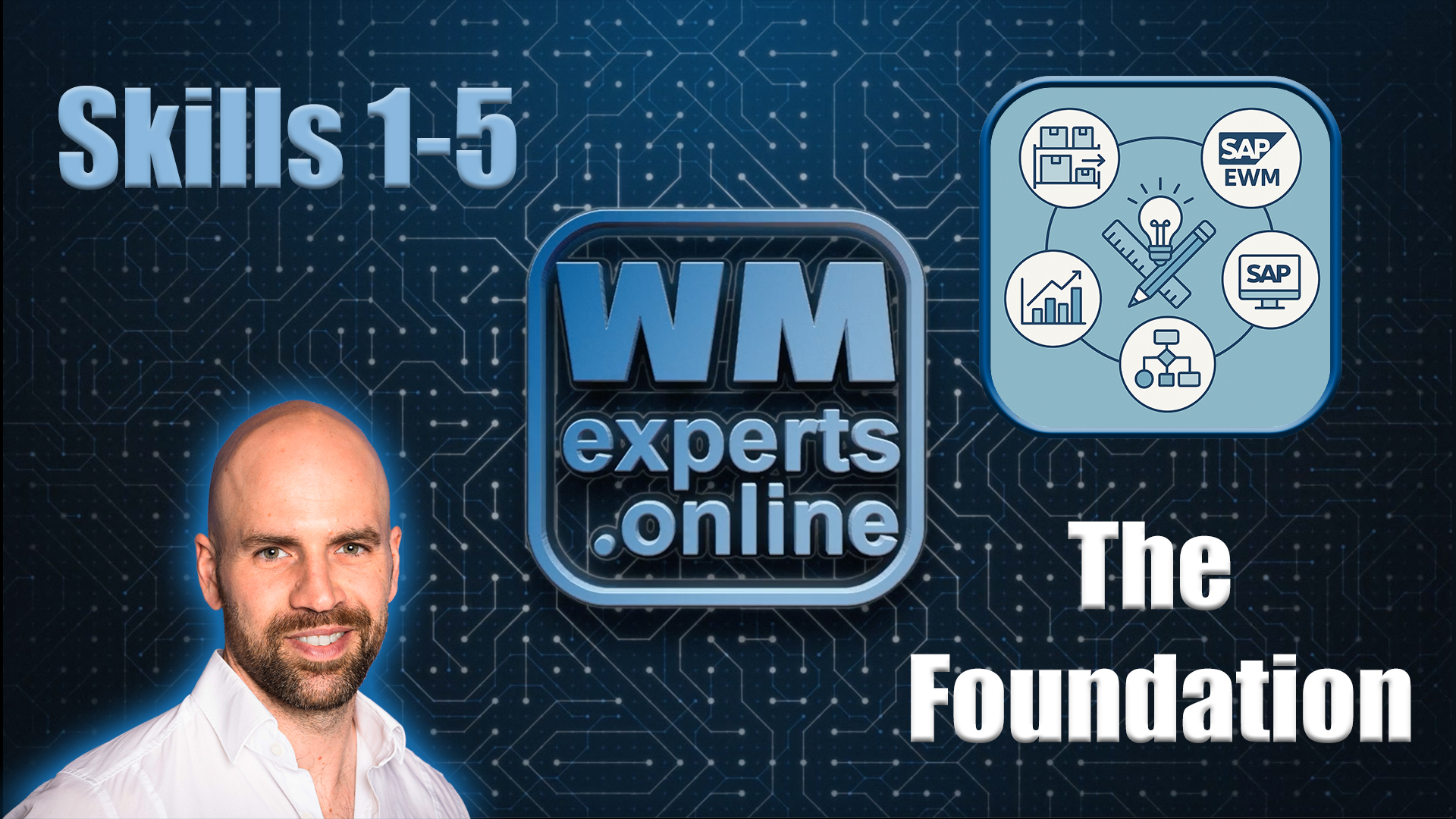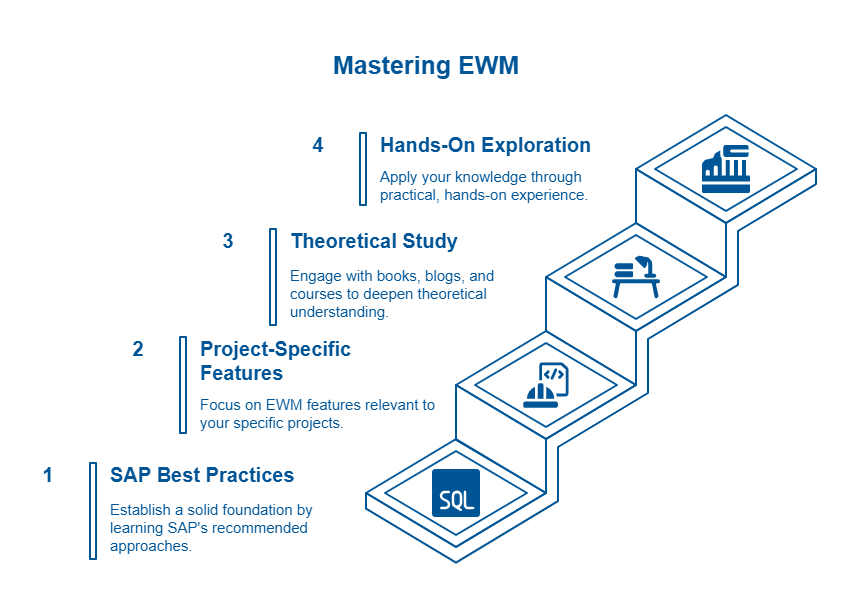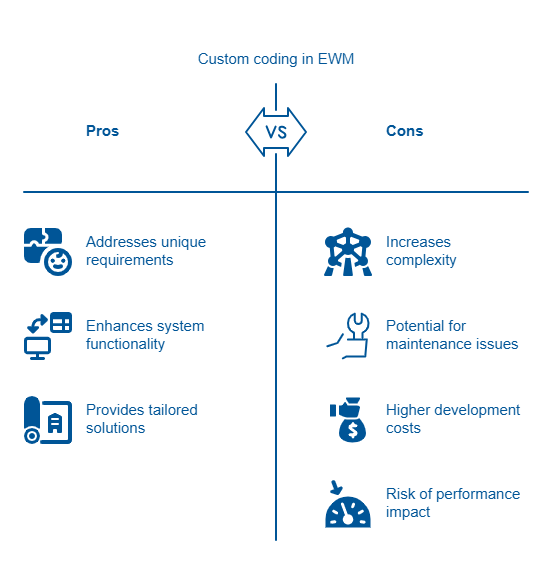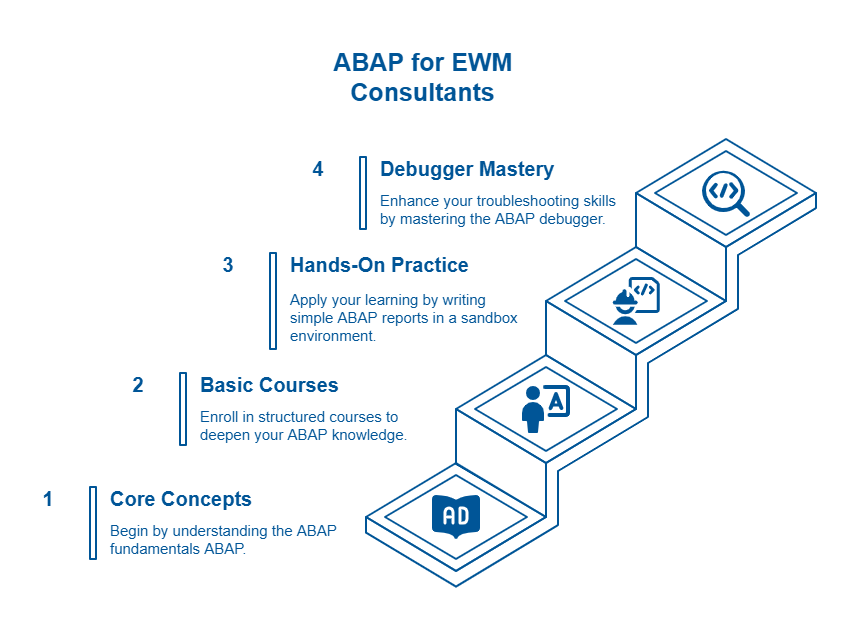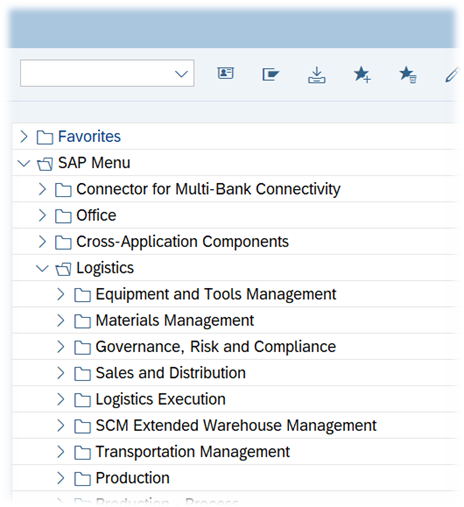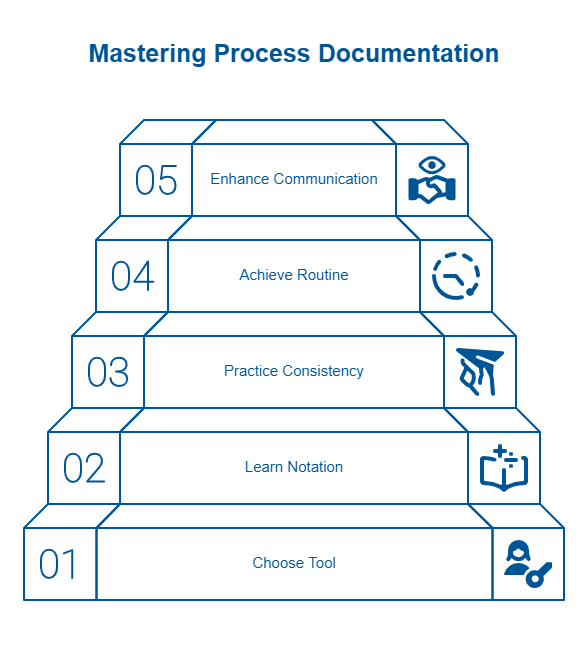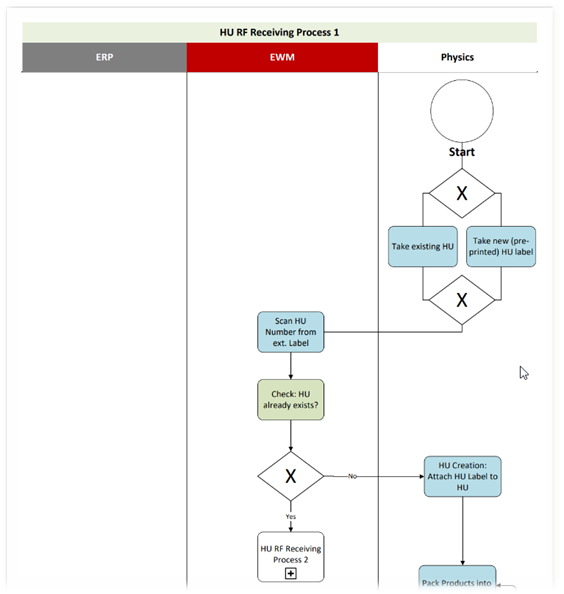Working as a SAP EWM Consultant
How do become a good EWM Consultant? (Part #1)
In this post, I present my personal top 10 list of skills required to become a successful EWM consultant. The first part of this blog post will cover five technical and functional skills that serve as the foundation for EWM consultants.
Tips 6 to 10, which I will publish in next month’s post, focus on soft skills that you develop over time and build upon your technical and functional foundation.
Before I begin with the list of skills, I want to emphasize that I am far from perfecting any of these skills. It is an ongoing journey for all of us, myself included. There is no end to this game for any of us; the path has to be the goal.
Enjoy reading!
1. Business processes
One of the essential skills for an EWM consultant is a deep understanding of intralogistics, warehousing, and related business processes across various industries. I emphasized this point in my article, “How to Start with EWM“, as a crucial first step for newcomers before diving into hands-on EWM tasks. To enhance your expertise, consider enrolling in internships, taking part-time jobs, or visiting warehouses to observe their operations, material flow, and software solutions.
2. EWM-specific functional knowledge
Another essential skill is – of course – to study EWM inside out :-). Understand its core components, processes, and functionalities. Start with SAP best practices, as they provide a solid foundation for your EWM knowledge. Build on this with project-specific explorations. Identify the EWM features and functionalities relevant to your projects and work packages. This way you study the theory (e.g., through books, blogs, or courses/trainings) alongside hands-on exploration of these features. This helps especially when you are not confident in understanding all aspects related to the process you are configuring.
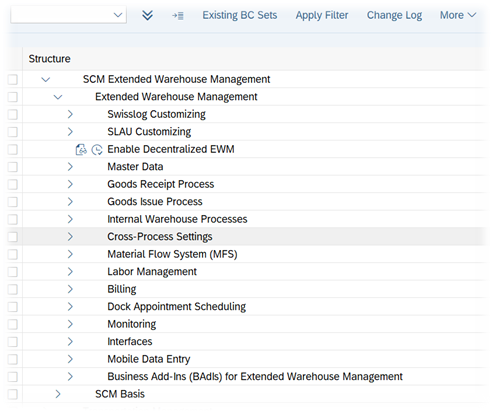
This approach will not only help you configure the system but also enable you to decide if and when it is reasonable to add custom coding to your systems. As an EWM consultant, you should guide business teams toward solutions that minimize the need for extensive coding. While some enhancements are necessary, striking the right balance ensures efficient system performance. Although custom code can address unique requirements, it is essential to weigh the pros and cons. I have never seen a project fail due to too little custom coding. 😉
3. ABAP
Part of the truth is also, that I have not seen a project yet that could be realized without any additional lines of code. While standard functionalities cover a lot, specific business requirements often necessitate additional enhancements.
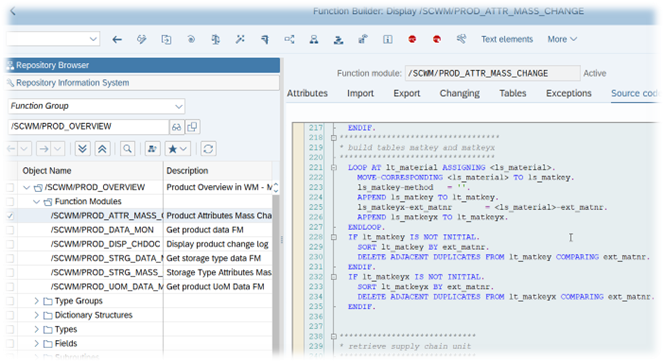
4. End-to-end SAP processes (incl. ERP)
You can run EWM as a standalone system without integrating it into any ERP system. However, in over 95% of the projects I’ve been involved in, EWM was connected to a SAP ERP system in some way or another.
Without knowledge of the ERP modules, delivering comprehensive solutions or processes within EWM can be challenging. While there are parts of EWM that may not directly impact or be affected by ERP modules, limiting yourself to those areas restricts your scope.
Therefore, it’s essential to understand the core functionality of certain ERP modules:
- Materials Management (MM): Familiarize yourself with MM processes, including procurement and inventory management. Also study how MM triggers the creation of inbound deliveries via SAP LES (Logistics Execution System).
- Sales and Distribution (SD): Understand SD processes related to sales orders, and distribution. Also study how SD triggers the creation of outbound deliveries via SAP LES (Logistics Execution System).
- Production Planning (PP): Although not the top priority, having knowledge of PP can be beneficial. Try to understand the different approaches available to integrate EWM with PP.
- Quality Management (QM): Consider QM as a nice-to-have skill. I used to go for an opportunistic approach here and study what I need when I encounter projects that require it.
- Transportation Management (TM): While helpful, TM expertise is often readily available when integrating EWM with TM. My personal opinion is that an EWM consultant should rather focus on the core ERP modules than spending a lot of time building TM knowledge (whereas I am aware that this might be a controversial point).
In summary, grasp the essentials of MM and SD, and consider expanding your knowledge to PP and QM as needed. TM, while useful, takes a backseat compared to the critical ERP modules as you will usually be surrounded by TM experts when the latter is in scope of your projects.
With these five skills or characteristics, I am closing the first part of this blog post. These were the technical and functional ones that build what I call the “foundation.”
Stay tuned for the second part of the post, which I will release in couple of weeks. It will cover the skills you add on top of your technical and functional foundation to fine-tune your profile!
